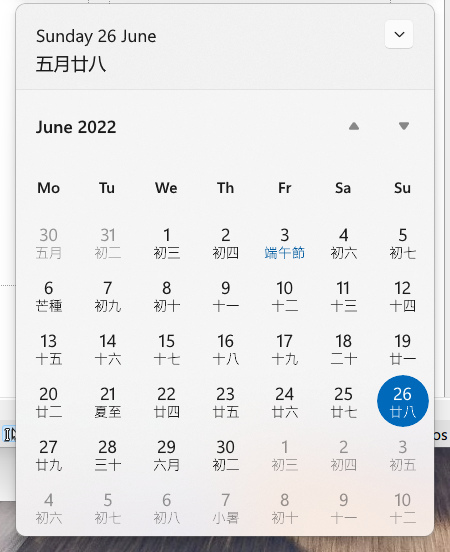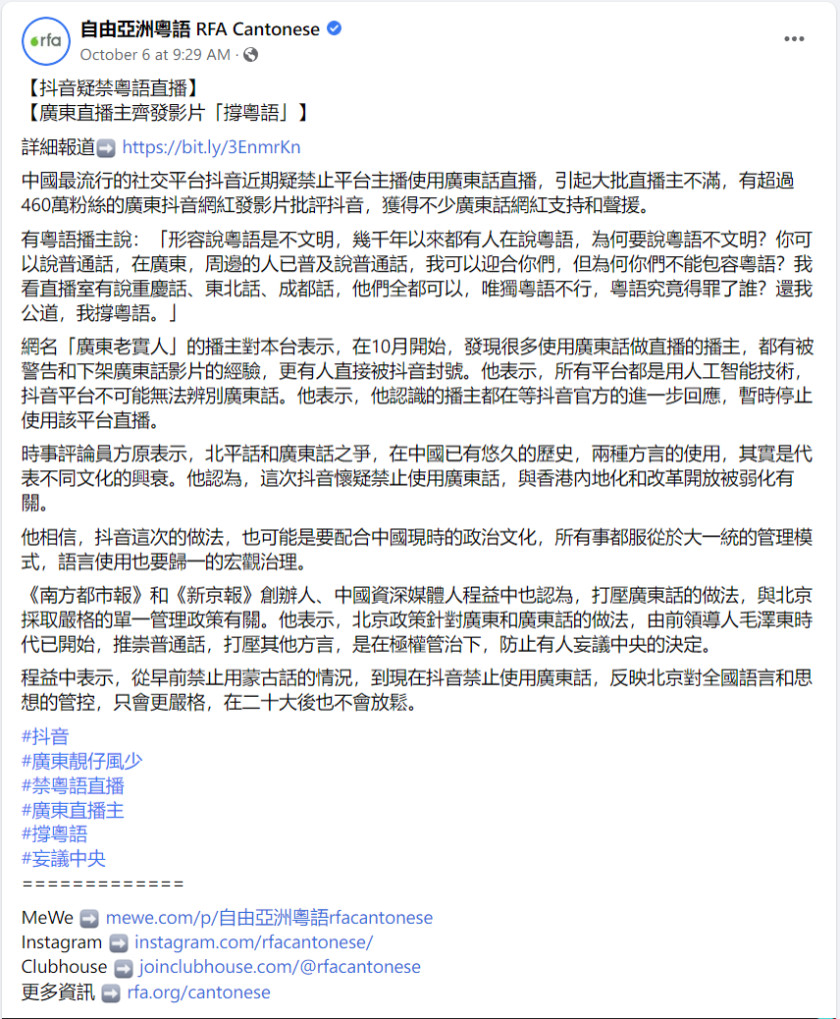When I first started commemorating Matariki a few years ago, I had figured out, since both ancient Māori and Chinese worked out the lunar calendar, that it was roughly five lunar months after ours. I was also told that it marked the Māori New Year.
Maybe it’s due to local iwi, but my recollection was that Matariki was about three days before exactly five months had passed, which would make it today, June 26.
As it’s incredibly common among Chinese people to have calendars that show both the Gregorian dates and our dates side by side, I began looking for a Māori equivalent. In fact, here’s my Windows version:

I came across this page from Te Papa (our national museum, for those who mightn’t know), which at least gives the names of the months in te reo Māori. And this was a pleasant surprise:
In the traditional Māori Maramataka, or lunar calendar, the new year begins with the first new moon following the appearance of Matariki (Pleiades) on the eastern horizon. Usually this takes place in the period June-July.
In other words, Matariki might mark the start of the New Year for Māori but isn’t the exact date.
From what I can understand, and I am more than happy to be corrected by tangata whenua, the Matariki holiday can encompass the exact first day of Pipiri (the first month of the lunar year under the Maramataka), and this is among the celebratory period.
What’s exciting for me as a person of Chinese ethnicity is that there is an exact parallel between our cultures in how we mark new months with new moons, and that this extends to the year, too.
In the interests of cross-cultural sharing, I’ve taken the Māori months and placed them alongside ours, so we can figure out when each of our people celebrates the New Year.
It’s so delightfully simple and way easier to convert than, say, the Islamic or Jewish calendars to Gregorian.
| Pipiri | 六月 |
| Hōngongoi | 七月 |
| Hereturikōkā | 八月 |
| Mahuru | 九月 |
| Whiringa-ā-nuku | 十月 |
| Whiringa-ā-rangi | 十一月 |
| Hakihea | 十二月 |
| Kohitātea | 一月 |
| Huitānguru | 二月 |
| Poutūterangi | 三月 |
| Paengawhāwhā | 四月 |
| Haratua | 五月 |
I assume Māori, like us, figure out when repeat months happen in order for Pipiri to fall right after Matariki, which technically makes their calendar lunisolar, too. (P.PS.: Leap months throw the conversion out because the Chinese method is to add the leap month during the year, so one of the above months “repeats” in the calendar. In the Maramataka, the leap month is appended to the end, as it was in 2023.)
It’s then very easy for someone with a Chinese calendar to figure out when the Māori New Year begins, namely 六月初一, and it’s very easy for someone with a Māori calendar to figure out when ours begins, namely Whiro, or the first day, of Kohitātea.
Celebrating Matariki has always come very naturally to me, and even how we observe it (family time, giving thanks to the year gone and for the one ahead) is similar. And no wonder.
I apologize if this is way too simple and already basic general knowledge but I only found out today!
PS.: It does mean, for instance, that this page (and presumably, many others) from the Parliament website is dead wrong. January 26, 2017 is not the same as 26 Kohitātea 2017:

So it seems it isn’t basic general knowledge.
P.PS.: There’s a lot more information confirming the above here, including the leap months. However:
The maramataka was revived in 1990 by Te Taura Whiri i te Reo Māori (the Māori Language Commission). Instead of using transliterations of the English names, such as Hānuere for January and Mei for May, they promoted the traditional names cited by Tūtakangāhau. However, lunar months were dropped in favour of calendar months, so that, for example, Pipiri became June.
To me, that’s a shame; there’s a reason ancient Māori created their lunar calendar. I can understand why the Commission did it, in order to keep the names of the months alive, and of course these names are preferable to transliterations. (Something similar has happened with our culture, but we don’t have cool names for the months as Māori do.) It’s just that Pipiri isn’t June, and this year, it spans more of July. Therefore, the conversion table only works with the traditional Maramataka, not the one adapted to the colonists.




